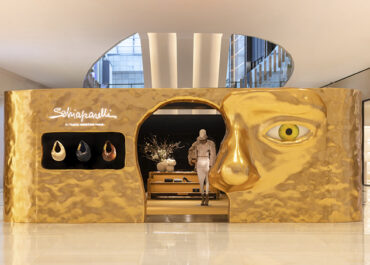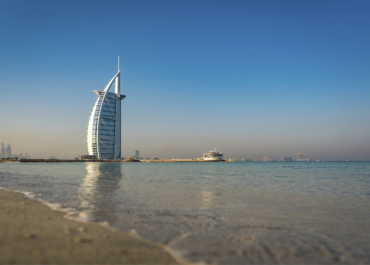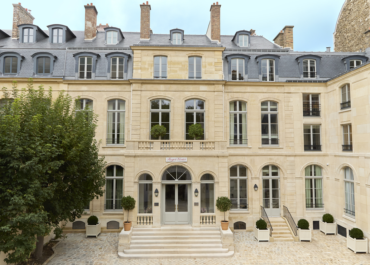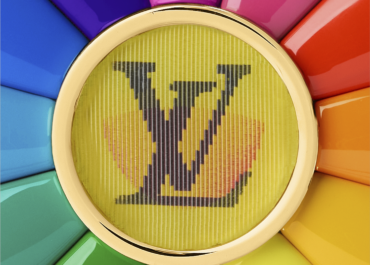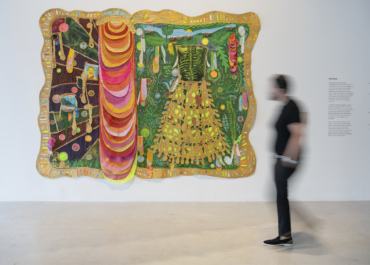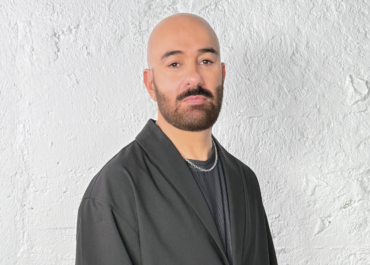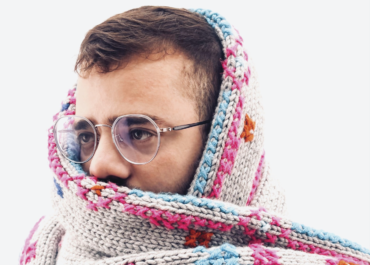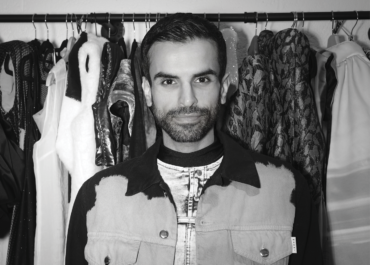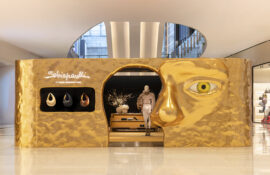Emanuela Venturini and Paola Marucci Founders of Oblong Contemporary Gallery express their love for Italian art and bringing it to the middle east.

Oblong Contemporary Gallery is an art gallery based in Pietrasanta in Italy. Founded by two female entrepreneurs Emanuela Venturini and Paola Marucci who shared a vision of combining their love for art and culture to create a cross-cultural exchange of art across the world. In order to do this, the duo set about creating a second gallery in Dubai which opened earlier this year. The gallery allows for a partnership and sharing platform between the two countries and the gallery is showcasing art from contemporary artists from Italy and the rest of the world.
As well as this the gallery will bring artists together through a platform of workshops, art forums and educational initiatives that will further enrich the art landscape in the UAE. Of course, right now the gallery is closed due to the current crisis, however in the meantime, Oblong has launched a virtual platform so that art lovers and collectors can access the gallery virtually and bring the art directly into their homes.
Founders Emanuela Venturini and Paola Marucci are both Italian themselves grew up immersed in Italy’s art scene. Marucci has lived in Pietrasanta for twenty years and is inspired by the incredible landscape of Italy. Venturini is an architect and curator whose experience in interiors is combined with a love of art and artists. As they sit in isolation waiting to get back to work, we discuss the importance of art in bringing happiness to our lives, art in Italian culture and how it translates to the Middle East.

OBLONG, Dubai gallery
What do you love the most about Italy?
PM: I love that Italy is recognized across the whole world for its art, fashion, culture, rich heritage and cuisine and more importantly, the people, their energy, passion and love for life.
EV: I consider myself to be very lucky that I was born in Italy. I owe it to my country for making me the person that I am today. From a very young age, I understood the beauty and harmony of art in all expressions. I am passionate about art and have been following it closely while travelling in Italy from north to south. All its magnificent landscapes, and places that are rich in art, history, culture, where the quality of life is at its best manifestation.
What is your favourite era of Italian art?
PM: I love contemporary art but every time I visit a museum, I’m very impressed by the Renaissance era and mostly the Venice’s Renaissance, and its significant contribution to art, and architecture. EV: As an architect, I would say the beauty and the significance of the Renaissance era as a gallery owner I would say Modern and Contemporary art.
What do you think Italian art offers that no other country does in the world?
PM: In my opinion, our history and culture highly influence Italian creativity, and Italy is the homeplace for diverse and extremely talented international artists. Oblong is a multicultural gallery, it is not only a place for Italian artists, but we encourage numerous international artists to collaborate with us. Our objective is to always our own style and concept of art in the artists we showcase and in particular sculptures.
EV: Italy is rich with its history and art and it has played a crucial role in the discovery of art and culture whether it was through Renaissance or the exploration of new lands. Through the centuries of culture, Italy has been a source of inspiration for artists across the world.

Robert Indiana, HOPE, May, 2015
How do you think the world of art in Italy has influenced Italian culture?
PM: Art has largely influenced Italian culture and I am sure you are aware that Italy is home to the largest number of UNESCO World Heritage Sites in the world and you will nd that everywhere you go in Italy has a story and it’s enriched with an art flavour.
EV: Italy’s culture and art influence and complement each other, just like the sky and the stars value each other. Italian art and culture continue to be inspired by our rich history, the beauty that can be found across the country and not to mention our cuisine that is loved by millions of people around the world.
What do you think is behind the Middle East’s fascination with Italian art?
PM: I believe that everyone in the world attributes to Italy and its important role in the history of art. Italian art has been present and has been maturing since the prehistoric period and during the Roman Empire, Italy created for the first time a universal language with its art. What Oblong is trying to highlight and build is the log Italian tradition in the manufacturing and processing of marble and bronze, which is characteristic of many Italian cities, including Pietrasanta and Carrara, where the Carrara marble quarries are, and these processes embody interesting and unique stories behind thousands of artworks and craftmanship.
EV: Italian art has influenced several major movements throughout centuries and has produced several great artists, including painters, architects and sculptors. The fascination with Italian art comes from many illustrations of people, artists, creators, inventors, architects, poets, musicians; men and women from our culture and leaders who have left a permanent mark over the centuries.

OBLONG, Dubai gallery
Do you see any overlap between art from the two regions?
PM: I think that art has a universal language that minimises all types of differences between people, bridges gaps and brings us closer. By viewing a painting or a sculpture you can understand the meaning and interpretation even if the artist speaks another language.
EV: Art for artists is always the expression of their own lived experience and the history and culture of the country where they were born and the place where they mainly lived. The two regions, the Middle East and Europe have a remarkable opportunity and cultural exchange, where you can view a strong point of amalgamation, and precisely through languages and cultures that appear to be different and yet have an intellectual understanding that can be born between the two civilisations.
What do you think customers are looking for from art in The Middle East and does this differ from what customers want in Europe?
EV: Collectors are attracted to artworks that evoke emotions. I am a Gallerist but I am a Collector as well. I understand that it is when you are in front of a work of art that you feel an irresistible attraction that enters your heart and soul. As such, I feel the Middle East and European customers are alike and there aren’t any differences since the artistic language is universal.
What advice would you give to upcoming artists during this time of crisis?
PM: During this difficult and challenging time, I encourage everyone, including artists, to reflect, grow creatively, and be positive and know that this time will pass. This is a good time for all artists to create new artworks.
EV: May the beauty of art help us to understand the harmony of good and support us to overcome these dark moments and we learn how to remain encouraged and with a positive mindset.
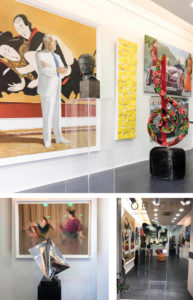
OBLONG, Dubai gallery
How do you think art can have a positive effect on our mood?
PM: Art is beauty and creativity, and these characteristics give people a sense of relaxation. Art is a powerful medium through which you can travel, dream and unplug your mind from your surroundings. In these hard times of global crisis and isolation, art takes up a central role in our lives, it frees our imagination, allows us to focus on hope in a world that is quickly unfolding.
EV: I can answer this question with a phrase, which sums up the concept of wellbeing… “being surrounded by harmony and beauty helps us to live better and longer.”
Why did you decide on Dubai for the second location of your gallery?
PM: For several years, the UAE has become the centre of art in the Middle East, thanks to the vision of its respective leaders who have embraced art and artists in different ways. I envision Oblong Contemporary Gallery to boost the art scene in Dubai and the UAE through the different cultural activities that we will offer. It is also a challenge for myself and Emanuela and we love embarking on new challenges!
Can you tell us a little about the cross-cultural exchange between the two galleries and countries and how it will work?
PM: Our vision is to share the experience of different artists by hosting educational programmes and workshops. Art is an instrument for social and cultural integration between different cultures and our purpose is to build a bridge between Italy and the Middle East, Pietrasanta and Dubai. Before COVID-19 we were organising an exhibition in Versilia of Arabian Artists during, “L’arte del Cavallo Arabo,” an important horse show that takes place annually in May in my home city Pietrasanta. However, due to the current circumstances, it is not taking place as scheduled but we will continue to work to create a full integration between the two cultures by bringing Arab artists to exhibit in Italy and vice-versa soon.
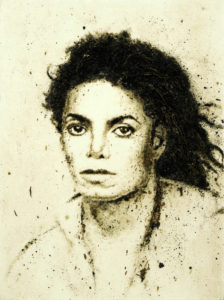
Enzo Fiore
We have seen you have virtual tours during this lockdown period – what can you tell us about the idea behind that?
PM: It’s imperative for us to not lose the connection and relationship between the artists and the art enthusiasts. As such, we have to find a way for all the art lovers and connoisseurs to be in the gallery virtually, view and enjoy all the artworks without being there physically.
EV: It was an idea that was born out of necessity. Technology has facilitated us with this initiative and has unleashed in us creatively to find new platforms of communication, and continue the engagement with art collectors both locally and across the world.
They say in every crisis there is a positive – what is something good you think will come from this crisis?
PM: I think that when there is a big crisis such as this happens people discover the true value in life such as family, love, friendship and support of the people around you. I’m a positive person and strongly believe that there is always a positive outcome especially after this current global crisis.
EV: This is a profound moment for humanity and calls upon us to intimately reflect the lights and shadows of our lives and ultimately grow. I believe it has given us all a great sense of unity and solidarity.
How are you spending your time in quarantine?
PM: I’m spending my time thinking about how to transform the traditional activities into a virtual capacity. We will have to deal with the current challenges and therefore we must strive to understand how to shorten distances, discover new methods and work more efficiently.
EV: In comparison to many other people, I am very privileged, I am at home and it’s my safe haven. I am currently living on top of a hill surrounded by a lovely landscape, the cherry trees are in bloom, the intense colours of sunrise and sunset are in harmony with nature and that encourages me to read good books and make plans for the future and our vision.
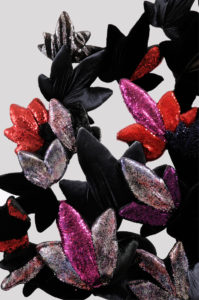
Carla Tolomeo
Can you give us any tips on how we can use art to brighten up the home during this time?
PM: You can visit any virtual museums, which are now made available online by many art institutions across the world, together with all the online exhibitions and, of course, our virtual gallery is available on our website. By choosing an art piece from our talented artists, you bring beauty into your home. We have several artists catering to everyone’s taste and home and as art is very personal, there is a diverse portfolio of artists to select from.
EV: It is precisely in these moments that the presence of art illuminates the heart. It is the very essence of art that with its presence, even the simplest drawing of a child hanging on the wall is a sign of hope.
If you had to choose one favourite piece of art or artist what would it be?
PM: That’s a tough question and it’s hard for me to choose one artist. However, I do love figurative artworks from Stefano Bombardieri and Igor Mitoraj and at the same time the abstract forms of Gustavo Velez and Agostino Ferrari.
EV: That’s difficult, but if I had to choose I would say Michelangelo Merisi known as Caravaggio.
As this issue is our tribute to Italy can you tell us what is your first memory of Italy?
PM: The landscapes of certain areas in Italy, and I am reminded by the view from the marble quarries in Versilia or when you are on the island of Capri. There are a thousand I could mention.
EV: I have many memories but one that stays with me is the ray of light that enters from the round opening at the apex of the dome of the Pantheon of Rome and it illuminates the magnificent interior.
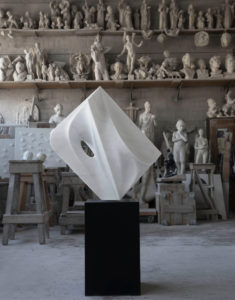
Bianca – Gustavo Välez
What about your first memory of art?
PM: I was fascinated by Igor Mitoraj’s exhibition at Pompei. The combination of the contemporary classicism of the artist with the archaeological site represented for me a moment of artistic ecstasy.
EV: When I was 14 years old and I travelled by train from Milan to Florence to visit the Uf zi Gallery. It was an unforgettable experience and journey and from that moment on art has always accompanied me.
How would you describe Italy in one word?
PM: Magnificent.
EV: Of course the only word that comes to my mind is “amore”.
READ MORE:



